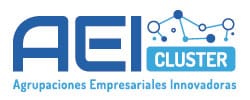At Cactus, we continue to drive digital transformation and innovation. This time, within the framework of the ECOPEST TECH SOLUTIONS II project and in collaboration with our partners Athisa (Grupo SASTI), Nazaries, Fundación Medina, and the innovation clusters OnTech and Bioga, we have begun deploying and field-testing our new smart device for remote and autonomous rodent detection. This milestone marks a key step in validating the technology and strengthens our commitment to developing efficient, scalable, and environmentally-friendly urban solutions.
Technological Advancement in Challenging Environments
This system is specifically designed to operate efficiently in urban settings, sewer networks, and industrial facilities, where power supply and connectivity often present significant challenges. Leveraging edge computing, advanced sensors, embedded artificial intelligence, and low-power IoT communication (LoRaWAN), the device delivers a reliable, autonomous, and scalable solution.

Integrated Technology Serving the Environment
Advanced Sensing
The device includes a suite of sensors for accurate environmental monitoring:
- PIR Sensor (Passive Infrared): Detects movement by sensing changes in heat radiation.
- Infrared Camera (IR): Captures images in low-light conditions, activating only during relevant events.
- Temperature and Humidity Sensor (e.g., DHT22 or SHT31): Helps contextualize environmental conditions to adjust sensitivity or identify behavioral patterns.
Smart Processing
An embedded computer vision algorithm enables the device to recognize movement patterns and identify rodents without sending images to a central server, thereby reducing both data transmission and energy use.
Efficient Connectivity
Alerts are sent via LoRaWAN networks, making the system suitable for areas without access to WiFi or traditional mobile networks.
Key Features of the Device
- Long Battery Life: Powered by a rechargeable battery optimized for low energy consumption.
- Operational Efficiency: On-device processing and AI minimize the need for continuous data transmission.
- Scalability: Easily deployable on a large scale with remote management capabilities.
- Resilience: Built to withstand harsh environmental conditions and infrastructure limitations.
One Step Closer to a Smarter, More Connected, and Sustainable Environment
With these first field trials for the ECOPEST project, we’re moving beyond the lab and taking our solutions into real-world settings.
At Cactus, we don’t just do research we deploy, test, and learn directly in the field. We believe in hands-on involvement, seeing how our ideas perform in real contexts, and actively contributing to the development of solutions that truly make a difference.
Let’s continue innovating for a brighter future!
Project Type: Industrial Research
An initiative funded by the Ministry of Industry and Tourism under the Support Program for AEIs to improve the Spanish industry’s competitiveness.
REFERENCE: AEI 010500-2024-4
Objective: Its goal is to optimize the use of biocides in pest control and to improve the effectiveness and sustainability of these treatments. It has received support for its second phase, focused on innovation, research, and development of new technological solutions for using biocides in urban pest control services, ensuring the protection of human, animal, and environmental health. Participants include Athisa Medioambiente, Nazaries Intelligenia, Cactus, Fundación Medina, and the Bioga Cluster.


Avanzamos con ECOPEST: comienza la fase de instalación de sensores IoT para la detección remota de roedores
En Cactus seguimos impulsando la transformación digital y la innovación. Esta vez en el marco del proyecto ECOPEST TECH SOLUTIONS II, y en colaboración con nuestros socios Athisa Medio Ambiente (Grupo SASTI), Nazaries Intelligenia, Fundacion MEDINA y los clusters de Ontech Innovation y Bioga, hemos comenzado el despliegue y testeo en campo de nuestro nuevo dispositivo inteligente para la detección remota y autónoma de roedores. Este avance marca un paso clave en la validación tecnológica del sistema y refuerza nuestro compromiso con el desarrollo de soluciones eficientes, escalables y respetuosas con el entorno urbano.
Un avance tecnológico en entornos complejos
Este sistema ha sido diseñado para operar de manera eficiente en entornos urbanos, redes de alcantarillado o instalaciones industriales, donde las condiciones de conectividad y alimentación suponen un reto significativo. Gracias a su arquitectura basada en computación en el extremo, sensores avanzados, inteligencia artificial embebida y comunicaciones IoT de bajo consumo (LoRaWAN), el dispositivo ofrece una solución fiable, autónoma y escalable.
Tecnología integrada al servicio del medio ambiente
Sensórica avanzada
El dispositivo cuenta con una combinación de sensores diseñados para ofrecer una monitorización precisa del entorno:
- Sensor PIR (infrarrojo pasivo): Detecta movimiento a partir de variaciones en la radiación térmica.
- Cámara infrarroja (IR): Captura imágenes en condiciones de baja luminosidad, activándose únicamente ante eventos relevantes.
- Sensor de temperatura y humedad (e.g. DHT22 o SHT31): Permite contextualizar el entorno para ajustar la sensibilidad o detectar patrones de comportamiento.
Procesamiento inteligente
Incorpora un algoritmo de visión por computadora embebido, capaz de identificar patrones de movimiento y roedores sin necesidad de enviar imágenes al servidor central para su procesamiento, optimizando así el consumo energético y de datos.
Conectividad eficiente
El envío de alertas se realiza a través de redes LoRaWAN, lo que permite cubrir zonas sin acceso a WiFi o redes móviles tradicionales.
Características clave del dispositivo
- Autonomía prolongada: Gracias a una batería recargable optimizada para bajo consumo.
- Eficiencia operativa: El procesamiento local e IA reduce la necesidad de transmisión constante de datos.
- Escalabilidad: Puede desplegarse a gran escala y gestionarse de forma remota.
- Resiliencia: Ideal para zonas con condiciones ambientales adversas o limitaciones de infraestructura.
Un paso más hacia un entorno más inteligente, conectado y sostenible
Con estas primeras pruebas de campo para el proyecto ECOPEST, damos un paso más allá del laboratorio y llevamos nuestras soluciones al terreno real. Porque en Cactus no solo investigamos: también desplegamos, testeamos y aprendemos sobre el terreno. Nos gusta involucrarnos de verdad, comprobar cómo funcionan nuestras ideas en contextos reales y contribuir activamente al desarrollo de soluciones que marcan la diferencia.
¡Sigamos innovando por un futuro más brillante!
Tipo de Proyecto: Investigación Industrial
Financiación: Esta iniciativa está financiada por el Ministerio de Industria y Turismo bajo el Programa de Apoyo a las AEIs, con el objetivo de mejorar la competitividad de la industria española.
Referencia: AEI 010500-2024-4
Objetivo:
El objetivo principal del proyecto es optimizar el uso de biocidas en el control de plagas, mejorando la eficacia y la sostenibilidad de estos tratamientos. Ha entrado en su segunda fase, centrada en la innovación, la investigación y el desarrollo de soluciones tecnológicas avanzadas para la aplicación de biocidas en servicios de control de plagas urbanas. Estos esfuerzos aseguran la protección de la salud humana, animal y ambiental.
Participantes del Consorcio:
- Athisa Medioambiente
- Nazaries Intelligenia
- Cactus
- Fundación Medina
- Bioga Cluster


